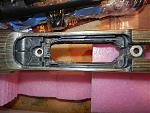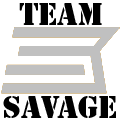Make sure you dry assemble everything before bedding. I had to remove metal from the rear pillar for trigger/sear clearance. I bedded the barrel, flipped it when dry and also bedded the floor-plate. As far as thickness of the bedding: 1/8" is good. I made a LOT of clay and cardboard dams (coated with paste-wax) to make cleaning up the excess much easier. I also coated EVERYTHING not being bedded with blue masking tape, also waxed.
Dry assemble it out of the stock to judge the proper pillar height.






 Reply With Quote
Reply With Quote




Bookmarks